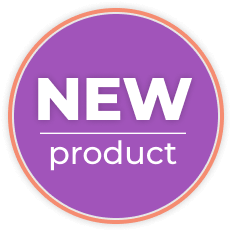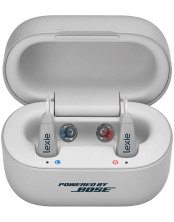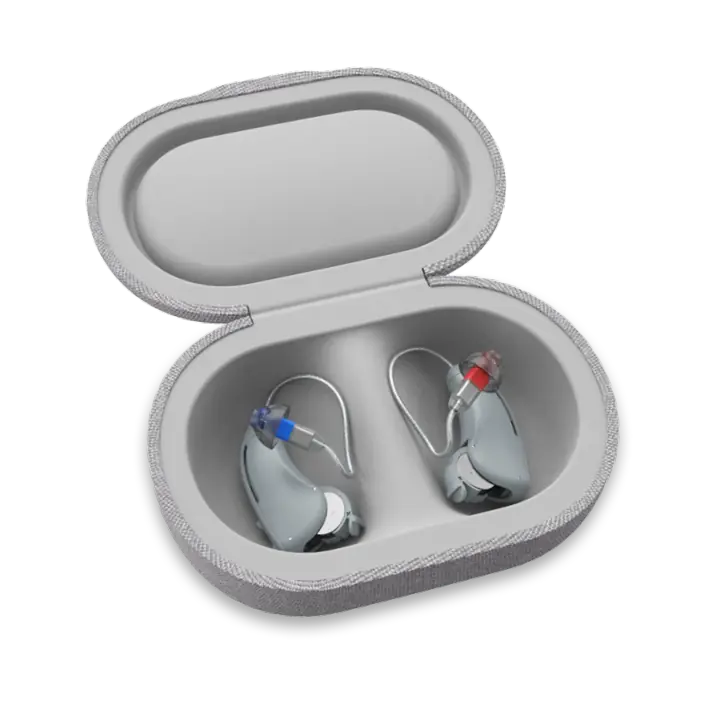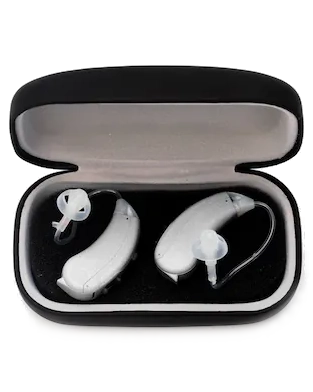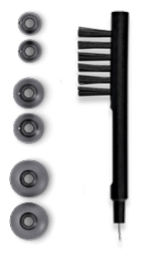8 Best Comfort Tips for Your New Hearing Aid
Published: May 21, 2021
Updated: March 23, 2023
8 Best Hearing Aids Comfort Tips
Hearing aid comfort tips could assist hearing aid wearers to be more comfortable with wearing hearing aids. Hearing aids give users access to sounds that were once inaccessible. It improves their quality of life and ability to communicate. The transition from living in a quieter world with a hearing loss to having access to a wider range of sounds can be daunting, and learning to use hearing aids can cause feelings of nervousness and uncertainty. Do not take for granted that you will simply wear hearing aids with comfort from the get-go.
The transition process is often made easier by using a hearing aid that is comfortable and that fits you well, which is essential to a long-lasting journey with your hearing device. Being comfortable with your hearing aid means developing an understanding of your hearing aid device and training your mind to adapt to a new enriched hearing experience. Here are some tips on how to ensure hearing aid comfort.
Understanding your device
A hearing aid is an electronic device made up of different parts which each have a specific function. Understanding how these parts work together to improve your hearing will help you to use your hearing aids with ease and troubleshoot if you experience any difficulties.
Hearing aid components
A conventional hearing aid is made up of three parts:
- The hearing aid body, which houses all of the electronics and controls.
- Different tubing such as an earmold tube, slim tube or receiver-wire, which all transport amplified sounds from the hearing aid body, over the crease between your ear and face and finally direct the sound towards the entrance of your ear canal.
- The dome, which helps sound enter the ear canal by keeping the ear sealed.
Hearing aid fit
Overall hearing aid comfort is largely dependent on how wearing your hearing aid feels. Discomfort may hinder you from using a hearing aid frequently. The body of the hearing aid ought to be light enough to not weigh down your ear and should sit high up against the back of your ear. If the body is too large or does not sit correctly, it may cause headaches and distort sound quality due to poor placement. The slim tube should run flush along the crease of your ear and attach to the dome in the ear canal. A slim tube that is too long will not feel comfortable to wear, as it may bulge or develop kinks, affecting sound quality. The dome ought to fit snuggly in your ear, to create a seal between your ear canal and the outside environment so that transported sound does not escape.
Hearing aid controls
Hearing aids have buttons situated on the body of the hearing aid that is used to control the volume, to change between listening programs, or to power up the hearing aid. You’ll need to become aware of where the buttons are when using the hearing aid so that you can adjust the volume or change between programs with ease.
Hearing aid features and programs
Each hearing aid may have different features and programs that improve the user experience. Some of these features include Bluetooth connectivity, allowing a user to connect wirelessly to other devices such as smartphones, enabling the use of their hearing aid during calls or to listen to music. Hearing aids often have different program settings that change the way your hearing aid selects sounds to amplify in your environment. For instance, a listening program for quiet environments would amplify environmental sounds whilst a listening program for work or college use would reduce background and environmental sounds and focus on amplifying speech. An understanding of which programs your hearing aid has, and which environment you can use them in, will enable you to have an optimal hearing experience, preventing you from unnecessarily adjusting the volume on your hearing aid.
Training your mind
Be patient with yourself
Transitioning into using hearing aids is a process, and as one would pace themselves when learning a new skill, the same principle should be applied with learning to use your hearing aid. Rushing into hearing aid use without becoming accustomed to the process can leave one feeling frustrated and dissatisfied and may result in decreased use of the hearing aid. Begin by learning about your hearing aid so that you are comfortable with inserting and wearing it. Thereafter, begin by using it for short bursts throughout the day, in different environments. For instance, you can begin by using your hearing aid for 2 hours in a quiet environment and listen out for sounds from the environment such as traffic on the street. As you increase your confidence, you can progress to environments that have many competing sounds such as a social gathering in a restaurant. You can keep track of this with a hearing journal.
Be realistic about your expectations
Hearing aids are not a cure for hearing loss but that should not discourage you. Depending on the degree of hearing loss you may have, your hearing aid will be able to provide access to a wider range of sounds that you were previously unable to hear. This allows you to have a richer hearing experience than you would have had without the hearing aid. You can practice this by going out with a friend to a place free of most man-made noise and try listening without your hearing aid on for a few minutes, keeping in mind the sounds you have heard. Try this exercise again, but this time with your hearing aids on, and notice if you can hear a lot more. This exercise generates awareness of the many sounds that may have been missed, without hearing aid use.
Educate friends and family and seek support
Our family and friends are our greatest support system, be honest with them about your new hearing experience. Educate them about your hearing aid, and the steps you are taking to transition. Family and friends can then ask how your progress has been and motivate you to keep going. You can also explain how they can help you improve your hearing experience. For instance, you can explain that you may experience difficulties hearing in environments with loud background noise and would prefer if they spoke at a slower pace. This enables your communicative partners to be aware of your needs and to help troubleshoot in difficult listening environments as communication is a two-way process, between the listener and speaker.
Hearing aid comfort is important in ensuring long-term satisfaction with your hearing aid. If you are experiencing difficulties with your hearing aid or require advice, speak to one of our Lexie hearing experts, who will be able to provide you with advice and recommendations on what your next steps should be.
